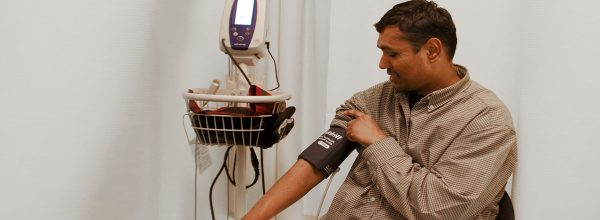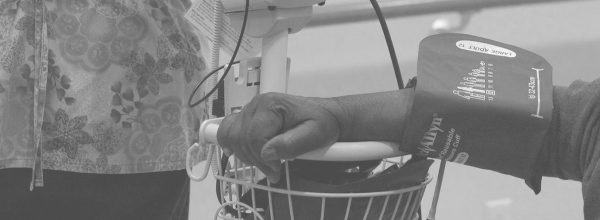![]()
Voices from the field: Innovating during the covid-19 crisis
In the face of the COVID-19 crisis, health care organizations and providers everywhere are faced with a massive shift in care delivery priorities. Determining how to continue providing care to patients with chronic conditions, who have an increased risk for contracting COVID-19, is a challenge. We put some questions about handling these dilemmas to Dr. Timothy Ho, regional assistant medical director for quality and Complete Care at Kaiser Permanente’s Southern California Permanente Medical Group, whose Community Benefit department funds Transforming Cardiovascular Care in Our Communities.
Check out our webinar with Dr. Ho to learn more about his approach and lessons learned to date.
What has your experience at Kaiser Permanente been in response to COVID-19?
 Let me start by saying that this is a very different world that we are living in. We are asking ourselves all of the same questions your safety net community is, and we don’t necessarily have a lot of answers yet. It is as though we were on a moving train and we had to pull the brake, completely stopping the train of population care. We see our recent COVID-19 response experience as a series of phases to safely restart the most critical cars of the train, while we leave other train cars on the tracks:
Let me start by saying that this is a very different world that we are living in. We are asking ourselves all of the same questions your safety net community is, and we don’t necessarily have a lot of answers yet. It is as though we were on a moving train and we had to pull the brake, completely stopping the train of population care. We see our recent COVID-19 response experience as a series of phases to safely restart the most critical cars of the train, while we leave other train cars on the tracks:
- Phase 1: Emergency stop. Shift all staff resources and attention to COVID-19 and protecting patients and staff.
- Phase 2: Assess the situation. We know that we won’t be able to get the train up and running again right now, but there are some cars that need to get moving again — this is the time-urgent chronic disease care that our patients need, for example. Waiting is not a choice.
- Phase 3: Starting to get some things back on track but in a different way. Relying on proxies (like home blood sugar testing for A1c, or home blood pressures) even though these may not be acceptable for the specifications of the National Committee for Quality Assurance (NCQA).
We expect to have another complete train stoppage as COVID-19 cases surge in mid- to late-April in different parts of Southern California. Hopefully repeating Phases 2 and 3 will be smoother than the first time around with what we have learned.
We’re expecting our transition to a new post-COVID “normal” to begin, maybe, around the end of May, with many of the changes being sustained. KP already had a very high share of virtual care — telephone, secure message, some video — but we expect some of that substantial increase to continue.
How are staff resources being reallocated?
For patients needing urgent ongoing care management — for example, dialysis — care is continuing. For high-risk patients with congestive heart failure (CHF), for instance, care management is continuing and staff have not been reallocated As conditions change, we will need to be flexible.
For care management for lower risk conditions — for example, hypertension and diabetes — a high number of our care managers have been reallocated, perhaps with a small percentage of the original staffing kept in place. This will be reevaluated as we move into our second complete train stoppage in mid- to late-April, with more reallocation likely.
You’ve mentioned a few ways KP has shifted their care delivery from in-person to remote. Is there anything else you can share about how you have moved care to phone, video, or secure messaging?
As mentioned before, we screen every patient to determine whether we can resolve their issue remotely. Most of our remote visits are happening over the phone, but we have been able to deploy a new video visit platform — one which we have been trying to get up and running for a while. The solution is just days old, but doctors seem pretty happy with it.
Is there anything else you would like to share about this experience to date?
It has been a very reactive and challenging time. But we are trying to leverage our ability to learn and test new approaches with PDSA. We are finding that where there has historically been resistance, there is less, and things are moving forward much faster than ever — and with a totally different level of communication. One thing we know for sure, this is a two-stage war, and we are preparing ourselves for the second stage.
Find this useful or interesting? We’re constantly sharing stuff like this. Sign up to receive our newsletter to stay in the loop.




